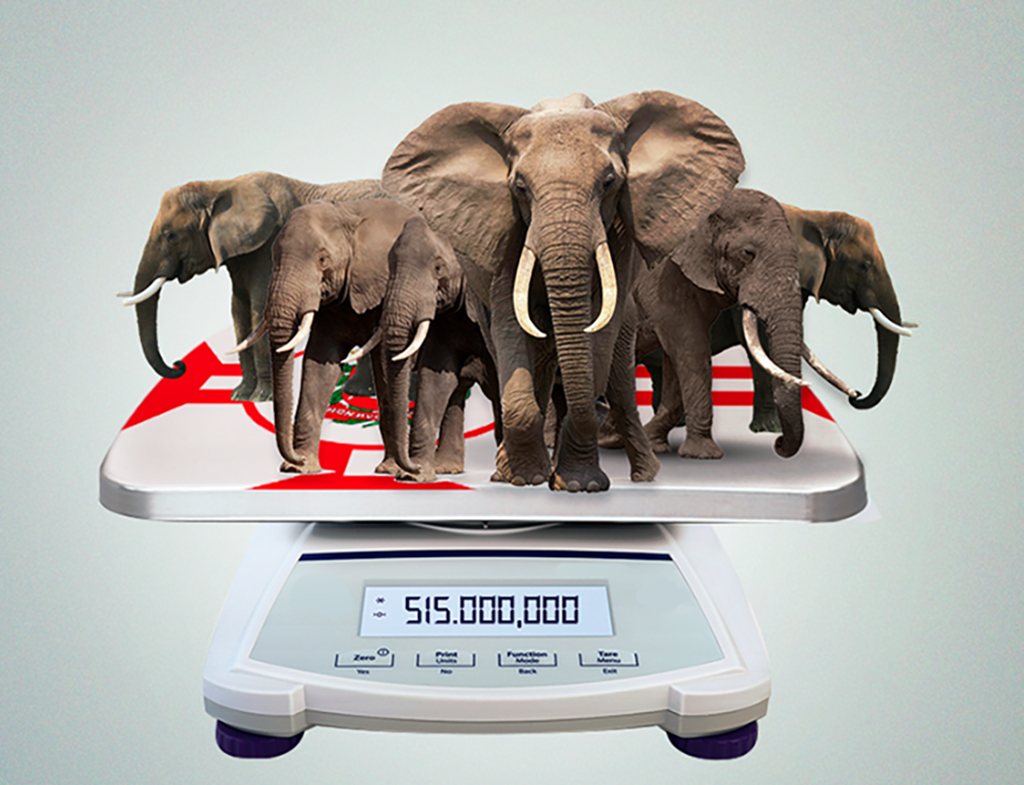
Written by Eduardo Leão de Sousa, Executive-Director at UNICA
The elephant is the heaviest terrestrial animal on our planet. On average, it weighs 5 tonnes. Now, imagine 100 million of them placed on a giant scale, whose balance pan is the size of a large city, such as Mexico City or Bangkok. The result of this hypothetical weighing would still be lower than the amount of carbon dioxide (CO2) avoided by the use of ethanol in Brazil over the last 17 years.
Indeed, about 515 million tonnes of greenhouse gases (GHG) were averted from the atmosphere since the flex fuel vehicle technology started in Brazil in 2003, thanks to our ethanol. This biofuel, produced from sugarcane, is capable of reducing up to 90% of GHG emissions when compared to gasoline, and also of resetting the dispersion of air pollutants that are harmful to our health.
Brazil has a long history of sustainable mobility. In the mid-1970s, we adopted ethanol blending in gasoline and launched automobiles that ran solely on ethanol, in response to the first oil crisis. This way, combustion engines became sustainable. In the beginning of this century, we pioneered large-scale manufacturing and utilization of flex fuel cars and, less than 20 years later, this technology is available in 80% of our fleet. Last year, Brazil took the forefront again by launching the first flex-hybrid vehicle in the world. And there is more to come: new technologies, such as direct-ethanol fuel cell, which extracts hydrogen directly from ethanol to power up the batteries.
Ethanol can also make a crucial difference to our health. Its clean combustion avoids dispersion of several harmful substances that are emitted by fossil fuels, like the particulate matter (PM 2.5). This pollutant is capable of penetrating deep into the lungs and ethanol use has avoided thousands of deaths and hospitalizations due to respiratory or cardiovascular diseases in Brazil. A recent Harvard University study concluded that an additional 1% of these particulate matters in the air increases COVID-19 death rates by 8%.
Due to our biofuel, if we compare São Paulo — the biggest city in the country — with other global megalopolis of the same size, the difference is abyssal. In New Delhi, India, for example, the average PM 2.5 in 2019 was 99 µg/m³, according to iQAir. In the São Paulo metropolitan region, the average was 5 times lower (17 µg/m³) and under the limit recommended by the World Health Organization, which is 20 µg/m³ of PM 2.5.
Starting this year, Brazil solidifies the environmental and socioeconomic benefits of this green industry by launching a modern public policy, praised as an example even by the International Energy Agency (IEA). We are talking about the Brazilian Biofuels Policy, called RenovaBio, the world’s largest program to decarbonize the transportation matrix, which became operational this year and established annual goals to reduce carbon intensity by expanding the share of biofuels in the energy matrix or by compensating these emissions with carbon credits known as CBIOs. This is an effective answer to the Paris Agreement, under the United Nations Framework Convention on Climate Change.
It is imperative to move forward. In a decade, RenovaBio’s goal is to withdraw, through CBIOs, almost 700 million tonnes of carbon dioxide from the atmosphere, allowing the country to fulfill its environmental commitments, a weight equivalent to 150 million elephants. And, like the elephants, recognized for their fabulous memories, we must keep track of the paths that brought us here. Learn from our mistakes and keep doing what worked well, with clear long-term public policies and entrepreneurs who are committed to constant improvement. This way, our hypothetical scale will get bigger and bigger, significantly contributing to reducing the world’s emissions, preventing hundreds of millions of these pachyderms, in the form of greenhouse gases, being released into our atmosphere every year.
Executive Director of UNICA
Former Senior Economist and Cluster Leader for agricultural and environmental programs at the World Bank in Washington (from 2003 to 2007), he joined UNICA in October of 2007. Prior to that, he was the head for agricultural and agroindustrial products at the Brazilian Ministry of Economics from 1999 to 2002. A former head of the Economic Department at the São Paulo State Federation of Agriculture (FAESP), he was also a Senior Researcher at the University of São Paulo’s Institute for Economic Research (FIPE). He holds a BA in Agronomic Engineering, a Master’s degree and a Doctorate in Applied Economics from the University of São Paulo’s Luiz de Queiroz School of Agronomy.

